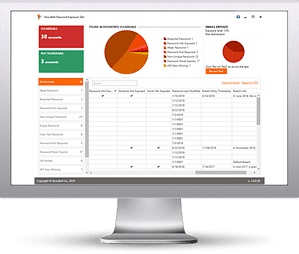Zero-day attacks are on the rise, with events reaching an all-time high in 2021. But what exactly is a zero-day attack, and how can you avoid it wreaking havoc for your organisation?
Zero-Day is a generic term which describes a cyber threat that’s just been discovered. When a vendor or developer finds out about the flaw they have to fix it immediately, meaning they have “zero days” in which to act. It’s sometimes written as 0 Day, and a range of different words are used alongside, including attack, vulnerability and exploit

Let’s take a quick look at each one individually, because there are some important differences.
- Zero-Day Vulnerabilities are flaws in software that attackers discover before vendors know anything about them. Because those vendors are blissfully unaware, they haven’t yet been able to create the necessary patches to keep them safe.
- Zero-Day Exploits refer to the methods hackers use to make the most of those vulnerabilities, and:
- Zero-Day Attacks are the next step, when hackers take action and steal data from vulnerable systems

How Do Zero-Day Attacks Work?
You’ve probably heard of patches; solutions that fix problems that arise as the result of software updates. Developers are always on the lookout for these problems, but unfortunately, so are hackers. So, if the attacker gets their first, developers find themselves in a race against time.
Attackers come in a number of forms, the most common being cyber criminals who are in it to make money. Other Zero Day attackers are:
Hacktivists: hackers who are motivated by social or political causes and want to raise awareness of their beliefs
Corporate Spies: these people engage in espionage on behalf of organisations looking for information – often about their competitors
Countries and Political Bodies engaging in Cyberwarfare
Once hackers identify a vulnerability, they will quickly write and develop a code (known as an “exploit code”) that enables them to take advantage of it. The most common way they do this is through phishing emails, which look like they’ve been sent from a trusted source. The message will ask the recipient to click on a link, visit a website or download malicious software. Once the code has been deployed, victims are open to a vast range of cyber-attacks, including identity theft.
Hackers will be constantly looking for vulnerabilities to exploit, and they can also buy them on the dark web. Depending on the software and the type of data that can be obtained, these exploits are hugely valuable – in 2018, the average cost was around £2,000. Cyber criminals sometimes act straight away, but they may just sit and wait for the best time to attack.
As soon as developers are made aware of a vulnerability, they will try to patch the software in order to prevent an attack. Unfortunately, it can take days, weeks or months for these vulnerabilities to present themselves – and be fixed.
As soon as an exploit has been identified and patched, it’s no longer seen as a Zero-Day threat.
Common Targets
- Missing data encryption
- Broken links and algorithms
- Bugs
- Missing authorisation information
How to Prevent an Attack
By their very definition, Zero-Day attacks are impossible to patch. However, there are some methods that can be used to prevent them happening in the first place. These include vulnerability scanning, patch management software and input validation, which all help you spot threats in real time.
One of the most effective and popular ways to prevent a Zero-Day attack is with a good web application firewall, which helps filter out unwelcome visitors and identify weak spots. We can help with all of the above, as well as offering a range of other systems and services to help protect your organisation from common cyber-attacks. Contact our team of cyber security specialists here at Actisoft Technology to find out more.
Are your users putting a big target on your organisation’s back?
Cybercriminals are constantly coming out with new ways to hack into your network and steal your organisation’s confidential information.
Find out if your users are putting a big target on your organisation’s back.
KnowBe4’s new Password Exposure Test (PET) is a complimentary IT security tool that allows you to run an in-depth analysis of your organisation’s hidden exposure risk associated with your users.
PET makes it easy for you to identify users with exposed emails publicly available on the web, and checks your Active Directory to see if they are using weak or compromised passwords that are part of a known data breach. PET then reports on any user accounts affected so you can take action immediately!

Here's how it works:
- Checks to see if any of your organisations email addresses have been part of a data breach
- Tests against 10 types of weak password related threats associated with user accounts
- Checks against breached or weak passwords currently in use in your Active Directory
- Reports on the accounts affected and does not show/report on actual passwords
- Just download the install, run it, get results in minutes!
Identify how many users take the bait and reply before the bad guys do!
